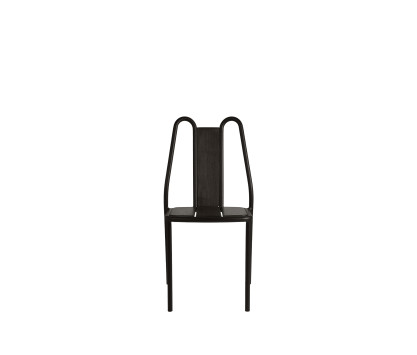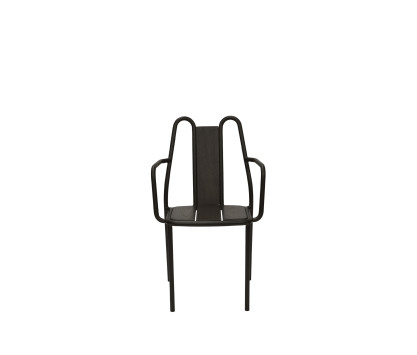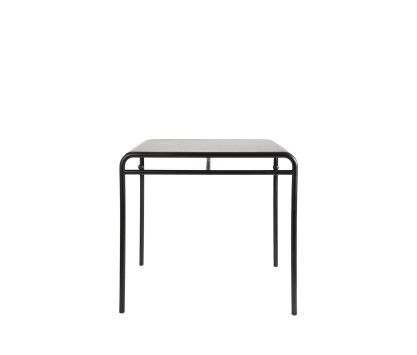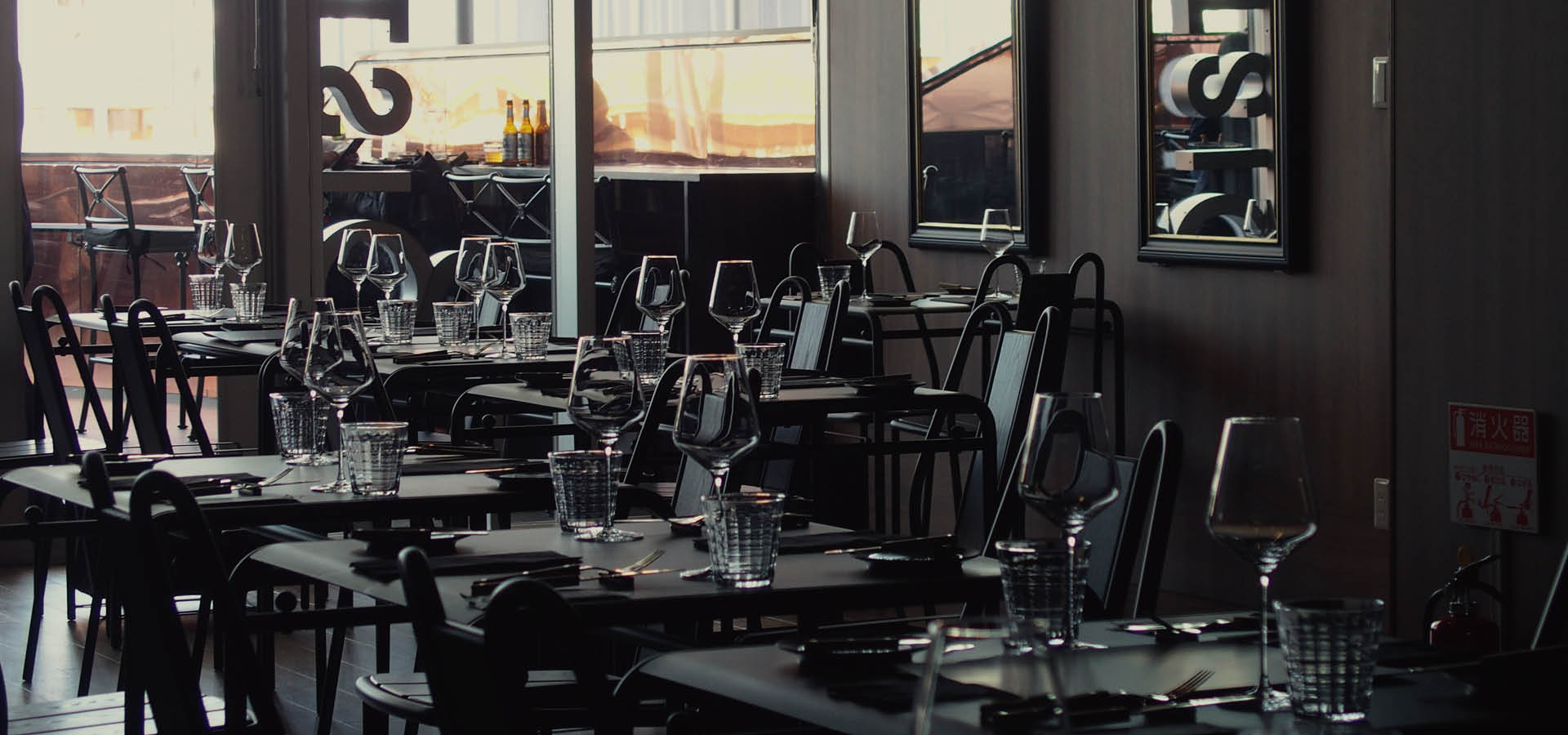
The bistrot chair reinvented for Osaka
Until 13 October, visitors will be flocking to the World Exposition in Osaka (Japan) and France has every intention of playing a prominent role through its pavilion. The theme “Hymn to Love” (Hymne à l’Amour) was chosen as a way of tying together the different spaces and also highlighting the rich cultural exchange between France and the Land of the Rising Sun.
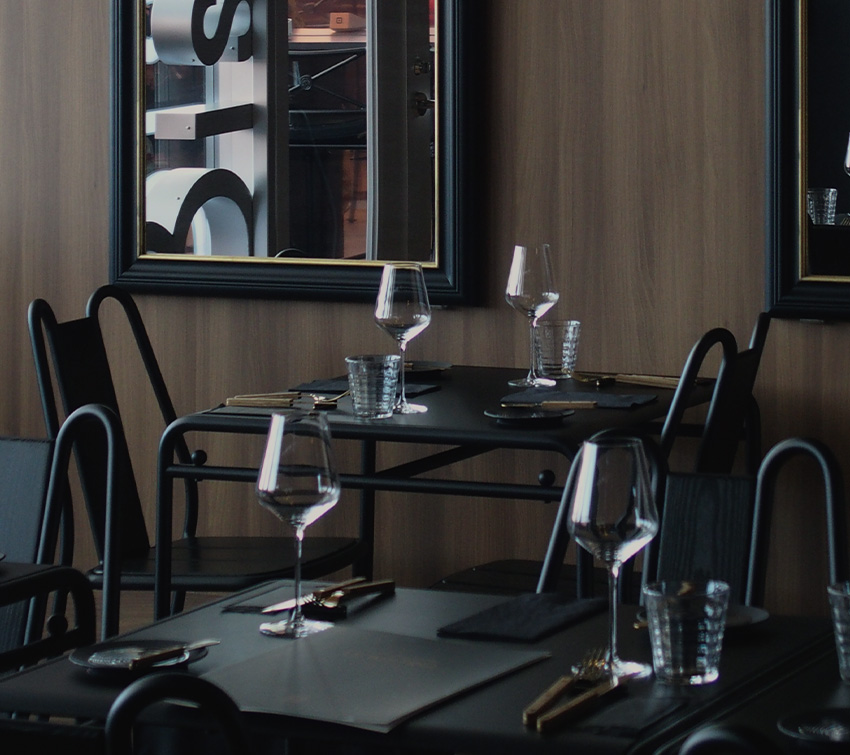
French design shines in Osaka
No furniture had been specifically designed for a World Exposition since the 1970s (Olivier Mourgue for Montreal in 1967 and Pierre Paulin for Osaka in 1970). With its characteristic vision and vitality, the board of Mobilier national seized this opportunity to showcase French creativity at Osaka 2025 and selected Tectona to develop the furniture.
Related products
Stackable chair in aluminium and ash
Stackable table in aluminium
To choose a designer, a competition was organised. Villa Noailles, which organises the Design Parade festival every year, was approached for a selection of candidates. Jean-Baptiste Fastrez won this competition. His addition to the Tectona catalogue is in keeping with a long tradition of collaborating with the best French designers: Ronan and Erwan Bouroullec, Pierre Charpin, Martin Szekely and many others.
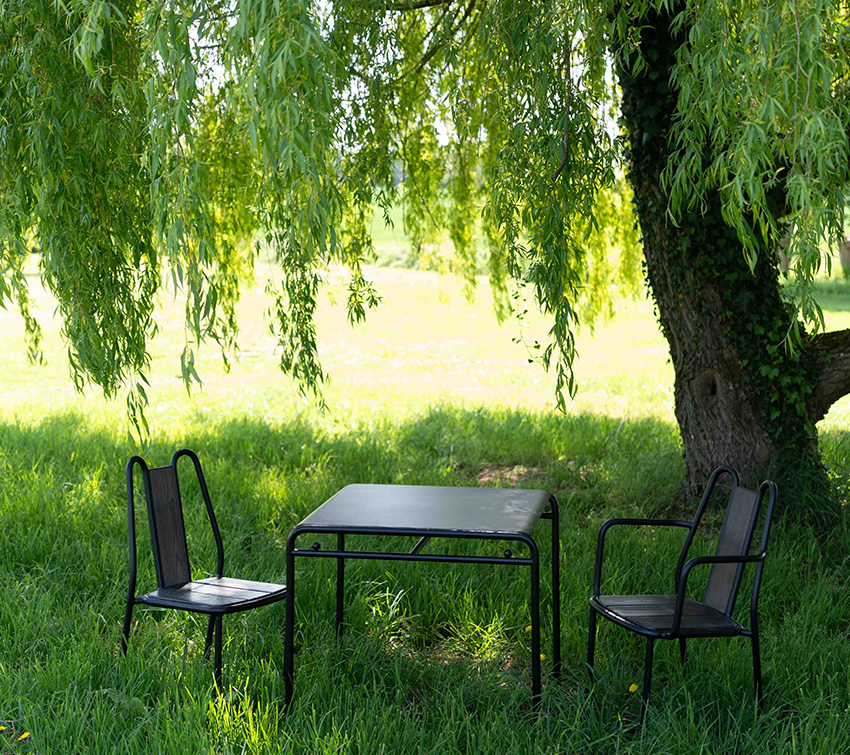
A collection published by Tectona
Fortunately the collection (armchair, chair and table) is not exclusively reserved for those attending Osaka 2025 as it will be jointly launched by Tectona and Mobilier national, which will also be able to recommend it to public bodies. In addition, although the collection on display at the France Pavilion will be in black only, commercialisation will bring other colour options!
Jean-Baptiste Fastrez, who spoke to T Magazine about how he designed the collection between France and Japan.

What was the initial brief for the project?
José Lévy, the pavilion’s artistic director, did not want me to see the pavilion’s architecture before designing the chair. He wanted the chair to function independently of its setting. The goal was therefore to design a solid compact stackable chair that was easy to produce with Tectona. The project also included stackable tables, which was a massive technical challenge. Finally, my guiding principle was the ties between France and Japan. I revisited the French bistrot chair – bistros in France signifying a place of conviviality and encounters – to evoke the notion of love and exchange. But I also wanted to enrich it with other references: a bit of Thonet, a bit of Mallet- Stevens... and a nod to tabis, two-toed socks, which for me evoke Japanese culture.
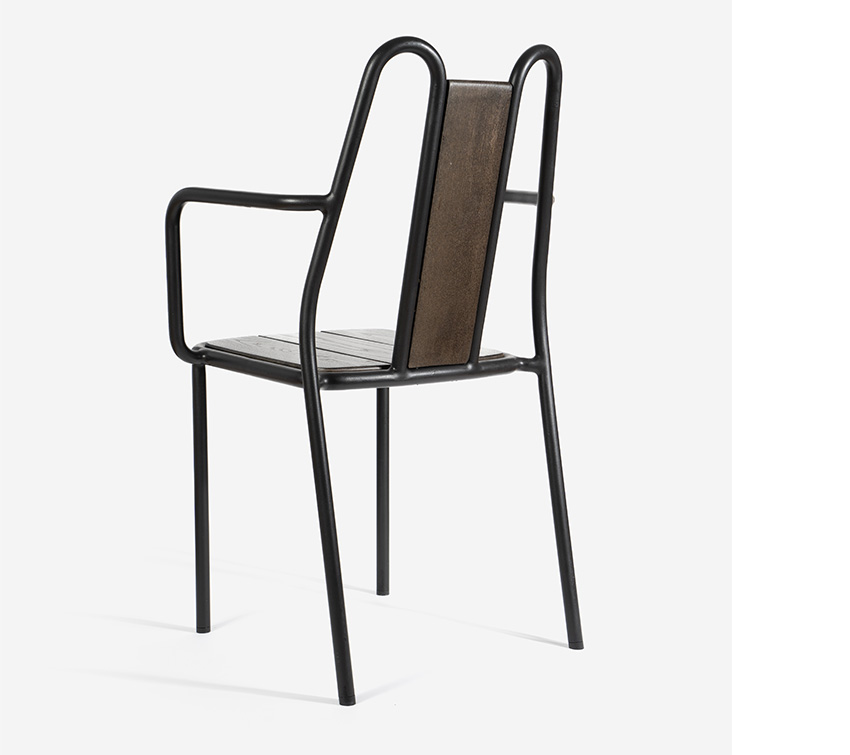
How did you come up with the distinctive form for the backrest?
It’s inspired by the form of a frog. On the one hand, it’s a nod to the nickname used for the French. On the other, in Japan, the frog is a totemic animal for explorers: travellers often have on their person amulets in the form of a frog. So the chairs in the France Pavilion become amulets of the France Pavilion, objects to protect the friendship between our cultures.
From the outset, for me it was essential that the design was in line with Tectona’s DNA. I analysed their work, especially their chairs made from tubes and wood, and I attempted to honour their heritage while also adding my personal touch. I decided that the structure should be made of metal, a light and resistant material, which moreover lends itself to elegant curves. Wood is used in key locations for comfort. This marriage seemed logical to me and it guided the design.
